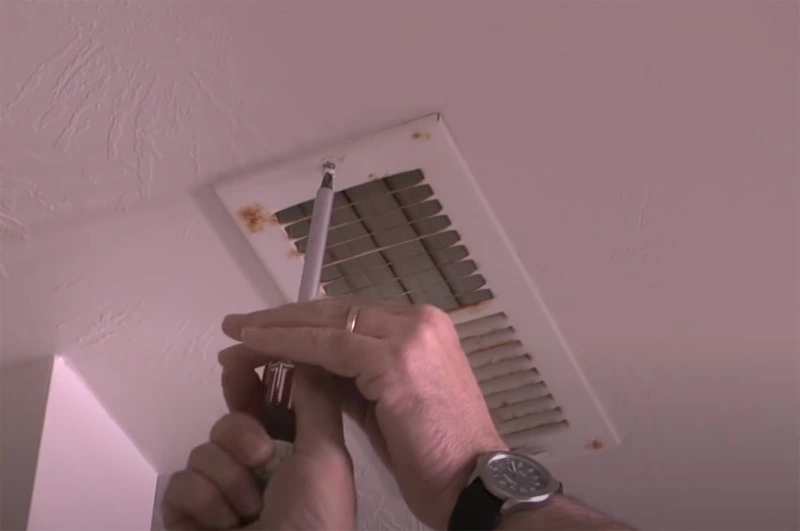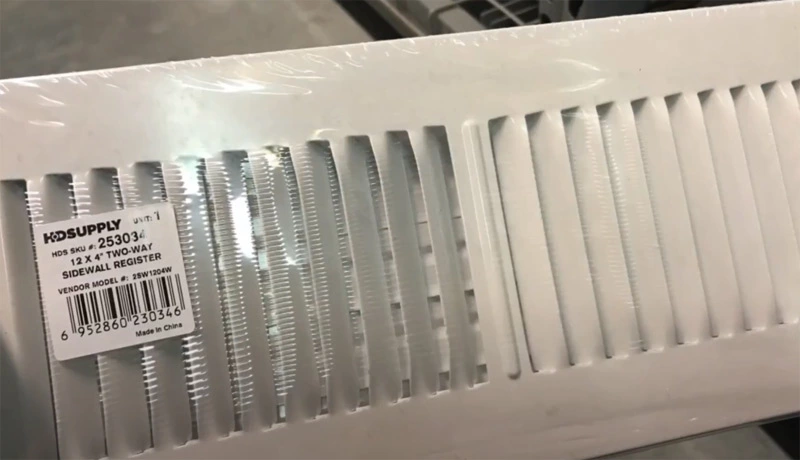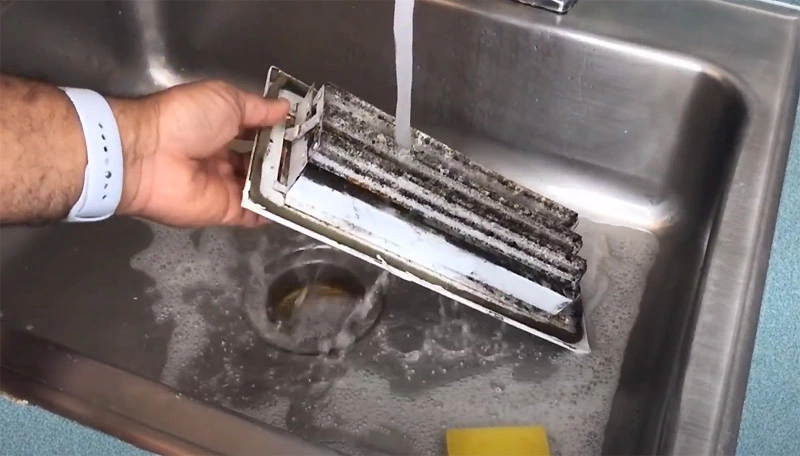What is aircon vent? An aircon vent is a device that keeps the pressure of air in your office or home. In addition to this, they keep the air inside your rooms filtered and clear. They also save on your energy expenditure if it is installed according to the energy code of conduct.
Let us jump into some details of the functions mentioned earlier of the aircon vent. It can either be a simple aircon functioning system or an HVAC system. It helps maintain the air pressure by only cooling or heating the inside as per requirements. The mechanism is straightforward as the conditioned air gets in the air inside your residence flows through ducts due to pressure difference. Aircon fulfills this necessity by pulling the inside air and releasing it to the outside atmosphere.
One of the essential requirements of inside air is that I should be free of tiny dust particles and debris. Aicon vent of your air conditioning system does this by catching the contaminated materials inside its filter. Aircon also helps keep the inside air quality better by filtering all the impurities of the inside air.
Proper installation of the air conditioning system can also save the energy bill. If the air-con system is appropriately installed, it will work with maximum efficiency, thus saves your energy expenses. One more thing that must be kept in mind for installing an air-conditioning system is that we must do it under the supervision of an installation and maintenance expert.
When an aircon vent is not maintained correctly, it will result in malfunctioning of the system, due to which inside air quality may reach a hazardous level. It is best if you kept in mind that the system is adequately maintained after a specific time of operation. When you feel like your system is not working correctly, you must immediately call an aircon technician, or you should see either heir a technician who will look after your design on a timely basis. This will ultimately increase your air-conditioning system’s life span and prevent you from a considerable loss.
Pros and cons of aircon vent

Pros and cons of installing an aircon vent in your house are as follows. The pros of installing aircon went are as follows.
The aircon vent is easy to install. It can directly be installed from the grant instead of making ducts in the walls, which can be costly.
Secondly, as we need less labor and equipment to install aircon vent, there is less upfront or installation cost. As the cool air falls through the ceiling vent, thus there is easy transfer of air and less heat loss.
Lastly, it saves space. As the air vent is installed in the ceiling, this means it does not take ground and wall space.
In contrast to the pros as mentioned above there some disadvantages of ceiling vents
As we know that heated air molecules rise if we install a ceiling vent, there will be a heat loss because the heat will not move down, so there will be an inefficient transfer of heat.
An attic is usually a dusty place, which will result in the wear and tear of the HVAC system. This wear and tear of equipment will ultimately result in heat loss. If used unmaintained for a more extended period, it will result in high heat transfer loss. Thus it will consume a lot of electricity and will make the system expensive.
In order to reduce the energy cost and increase the functioning of the system, the vent can be installed in the dropped ceiling or a bulkhead. This will improve the quality of inside air and reduce the monthly energy expenditure, and it will also increase the life span of the aircon vent. If you keep the things mentioned earlier in mind, your air-conditioning system will perform better and save you some money.
Types of AC vents

HVAC vents are divided into three types based on their structure and how they perform their job. There are three types of HVAC vents which are Grilles, register, and returns. Although they are all types of HVAC vents, there is a considerable distinction between these terms.
Supply and return vents
Supply vents are usually smaller in size than the return vents, and they are connected to the supply ducts, which push the conditioned air into the rooms. Most of these vents have slats that direct the airflow. You can do a straightforward experiment to make you know the vent is supply or return. You have to place a piece of paper in front of your vent after turning it on; if the air blows out, this is a supply vent.
In contrast to supply vents, return vents are connected to the return ducts. Their function is to suck the inside air to the conditioning system, their size more extensive than those of a supply vent. To identify return vents, simply repeat the experiment mentioned above. If the paper is pulled, then the vent is return vent.
Grilles and Registers
The grille is a fixed opening( covered with metal ) through this opening air passes, and it is typically used in return application of air. The grille does not contain a damper, and it is installed with the neck. A register is a grille with a damper on it. The purpose of a damper is to control the movement or the flow of air. Its typical application is for supply air.
In extreme summers or winters, the room temperature either gets too cold or too hot, respectively. To normalize this severe condition, we need to either open or close the vent. Doing so will help us in maintaining the temperature to normal. The question here is, how can we open or close a vent? I’ll guide you with this.
How to open or close aircon vent
First of all, you need to place a chair or a ladder in front of the vent so that you will reach it with ease. Make sure that the support you are sitting on is safe and stable. Then keep stepping on the ladder until you reach the vent. The next step is to locate the switch. There are two possible positions to do this. You can place it in the center of the vent is round, and if it is rectangular in shape, you can you need to place the switch on left or right.
In some cases, you can manually adjust the blades. If the vent is round or square, you need to turn the switch to the right to open the vent and turn it left to close the vent. If the vent is rectangular, you can give an up or down moment to open or close, respectively. I hope you will know to be able to open or close the vent after going through this article.
The next thing which you should know about the aircon vent is, how can you clean it?
How to clean aircon vent

Cleaning your aircon vent is the best way to make sure that you are breathing clean air inside your home. The air ducts of your conditioning system contain billions of small particles like hair, dust, smoke, etc. Maintaining a regular cleaning habit will clear all these tiny particles and will keep your duck crystal clear. One more advantage of cleaning the duct is that it will save your money by keeping the aircon vent away from wear and tear. It will also prevent the conditioning system from colossal damage. In order to clean your air conditioning system, you need a cleaning brush, screwdriver, heavy-duty vacuum, and a broom.
Before beginning the cleaning operation, switch the system OFF. Now sue the screwdriver to unscrew the duct covers. Now clean the grates properly; if they are filthy, use water and soap to clean the otherwise, do it with a brush only. Now using the vacuum cleaner clean the ducts properly. Hiring a professional is an excellent idea to do the duct’s cleaning correctly. The last step is to clean the grills using a vacuum pump. If you can not reach there using the vacuum pump, use an alternative method to do that. Make sure that you protect yourself from the dust. You can wear a proper dress to do this. I hope each and everything is clear to you after going through these passages. If anything is unclear to you, you can go through the Frequently Asked Questions.
Frequently asked question
Which way should a ceiling vent be facing?
In order to get maximum flow of air to the room, point the open vent to the center of the room. This will enable the ceiling went to direct the flow of air to the center of the room. The air conditioning vent should point upwards so that hot air rises up and keep the room cooler.
What temperature should the air be at the AC vents?
A normally functioning Air-conditioning system should have a 20-degree difference of temperature from the temperature inside the room. Let’s suppose the temperature inside a room is 10 degrees, and you want to raise the temperature of the room, then you should have a temperature of 30 degrees at the AC vents. I hope this sounds clear to you.
How do I know if my AC vent is clogged?
There are two signs that will give you an indication of clogged vents. If your energy bill starts increasing, then the vents of your AC are clogged. The other sign is a change in the temperature of your room. If the temperature of your space is different from what it used to be, then probably your AC vents are clogged.
What happens if the AC vent is blocked?
When the ac vents get blocked, then there will be a temperature difference. In his case, your room temperature will not be the same as you set on your thermostat. You should consult a technician if you observe these signs.
Should I open the vent on my airer?
Keeping your ac vents open is a good thing. It will help you maintain a healthier room temperature and help save some energy bills. Closed vents usually damage the air conditioning system, so you should keep the vents open to prevent the system from any damage.
Is it good to block a return vent?
A blocked air vent will make the AC system work harder, and this is because of less airflow to move the air back to the furnace. So you should not block the ac vents if you want proper functioning of the system. If your air vent gets blocked due to any reason, the system will no more function properly. So why should you do it on your own? It is better not to block your aircon vent.
Is blocking air vents bad?
Yes, blocking air vents is, without any doubt, a bad idea because it damages the whole system. A blocked vent means your system’s functioning is not normal. If the function of the AC system is not normal, it will consume lots of energy, and due to which expenses will be more. So it would be best if you never blocked the AC vents what so ever.
Do vent deflectors work?
Yes, absolutely ! their works are to redirect the air that is coming from HVAC vents for proper heat and cooling. It is an accessory that is adjusted over the air vents.
What is the difference between the register and a vent?
The register has the ability to control and adjust the flow of air by closing and opening a damper with is attached to it. Vent lacks the feature of controlling airflow. It only allows the passes of air through spaces that are present on it.
Can I cover an AC vent?
It would be better if you did not cover the AC vents while the system is operational. If you cover the vents, the system will keep pushing air to the vents and ultimately damaging them. That is why my suggestion is no to cover the vents while the system is operational. You can cover it when the system is off to prevent dust particles’ flow to the vents.


